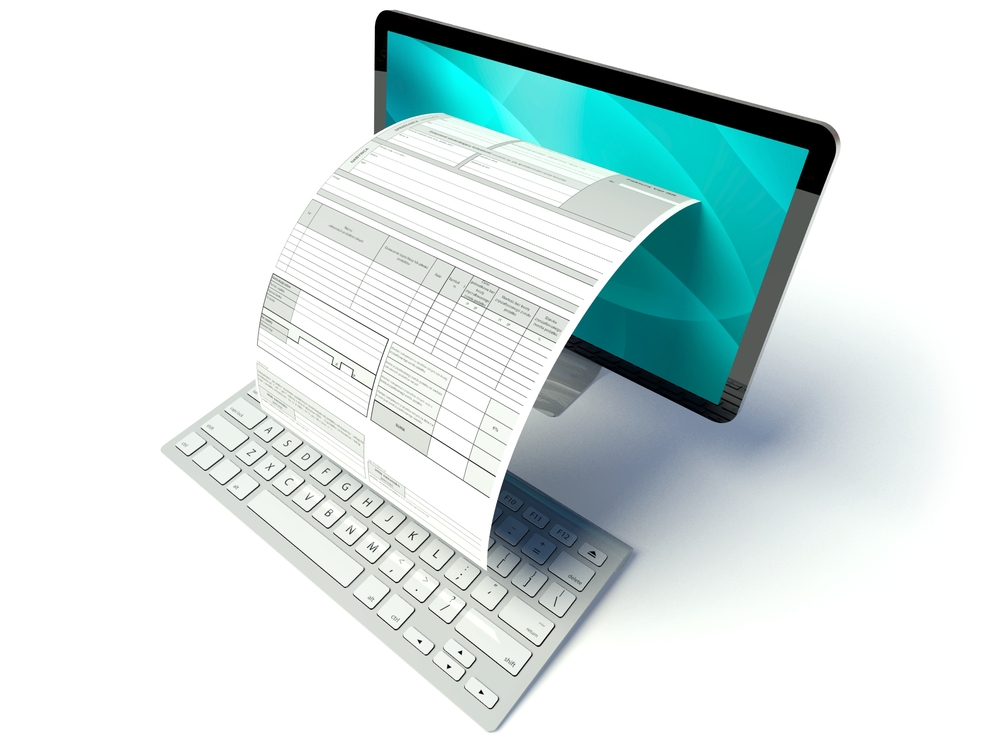Companies need to be as effective as possible to succeed in today's competitive business environment And here highlights the role of electronic invoicing, which comes to offset the onerous and error-prone process of sending customers' invoices manually where payments received are processed by a single system that does all that, Often automatically through the electronic billing system, this is among the many benefits of electronic billing, In the remainder of the article, we will address other benefits of electronic invoicing after learning about the concept of this system and what it is, read on.

What are electronic invoices?
Electronic invoices are an off-paper way to send invoices and process customers' payments online, where electronic invoices are generated and delivered electronically for invoices requesting payment for products or services provided, electronic invoices replace hand-generated paper invoices.
E-invoices typically contain the amount due, payment terms, order number and a link to a secure payment gateway, where customers can pay their bills online, and e-billing integrates several types of software involved in billing and payments, however, e-invoicing does not necessarily require an e-billing system - ERP systems can also provide functionality.
How do electronic invoices work?
Electronic invoices are a process used by debtor account employees for customers' bills and receipt of payments electronically, customers can access their e-invoices on the company's website, or the e-invoice can be delivered via an email attached to an electronic document, such as a PDF or XML file. In either scenario, customers have the ability to check their bills online before making a payment.
Most companies use two types of electronic invoice payment systems: direct invoice router or bank pool, in direct e-invoice invoicing, the customer logs into the company's website to view and pay their bills by entering the bank's information or credit card.
In the electronic billing system of the bank complex, the customer logs into the bank's website to obtain his e-bills and pay using the bank's payment interface.
Install electronic invoices
The electronic invoicing system eliminates handling manual invoices and time-consuming payments. Below is the electronic invoice applied through the set of steps included:
Information Collection
The system collects customer invoice data from accounting or ERP software, including product price or service provided, purchase date and payment terms.
Create invoice
The data is poured into an invoice template, then the invoice is created.
Bill Delivery
The invoice is sent to the customer electronically via email or via a secure web portal, or through any other form of file transfer, and the customer then receives notice that the e-invoice is available.
Invoice reminder
The system sends electronic reminders to the customer if he does not open his invoice, approaches payment or misses payment.
Payment of invoices
Electronic invoices often include a link to an online portal, where customers can enter bank or credit card information and authorize the payment of bills.
What is in the electronic invoice?
The electronic invoice includes all the information that appears in the traditional printed invoice, Includes invoice issuance date, due amount, due date of payment, goods or services provided and payment terms and the electronic invoice often has a clickable link leading to the tow gate, The customer can pay electronically using his bank account or credit card information Electronic billing makes payment easier and more convenient for customers, which in turn can lead to faster payment and increased customer satisfaction.
The most important benefits of electronic invoicing
Electronic invoices are win-win for both companies and customers, here are many ways that both parties benefit.
Improved Vision
E-invoicing provides businesses and customers with a quick and simple way of seeing, customers can be automatically reminded about unopened e-invoicing, upcoming or late payments.
For example, the company can review reports from the electronic billing system that tracks monthly electronic billing and identifies customers who pay on time or in arrears, and the electronic billing system can combine sales, marketing and other operating data with historical billing information to help determine which products to keep in stock.
Faster payments
Electronic invoices are much faster than traditional paper billing, which requires printing invoices, stuffing them into sealed envelopes and sending them by regular mail, while electronic billing reduces the time between the time the invoice is created and the time it is paid, sometimes to a day.
Electronic billing can also be used to renew a subscription, such as a digital news media website, and most importantly the less friction in the invoice and payment process, the faster the company's payment, which can improve cash flow metrics and key performance indicators.
Greater accuracy
Invoices are more likely to enter data and computational errors when manually processed invoices ", sometimes this can lead to repeated invoices or the need to reissue invoices that originally contained errors, In return, software-generated electronic billing can help reduce or remove these problems in addition to shortening the time spent investigating problems.
Lower expenditure
Electronic invoices eliminate costs associated with printing, filling and mailing paper invoices and reduces the number of people needed to process and track payments, This also reduces costs, and instead of spending time on monotonous and recurrent billing-related activities, Skilled staff can focus on more strategic and value creation tasks and the e-billing system that expands as the business grows may avoid the need to hire more staff.
Improving customer relations
Customers usually have greater confidence in the business that offers e-billing because every historical payment fee and data is displayed and is readily available, customers may also appreciate payment reminders that help them avoid late payment fees, or re-subscription reminders so they don't face a gap in service.
Conclusion:
Electronic billing requires less energy and resources than paper invoice, making electronic billing good for the environment, it will be appreciated by environmentally interested customers, and finally electronic billing helps balance and reconcile books, more accurately forecasting cash flow and improving working capital by reducing outstanding day sales.
Important Topics
Reference
1. <<Electronic Bill Payment & Presentment (EBPP)>>, investopedia
2. <<Violation of refraining from issuing the tax invoice>>,wikipedia

Comments
20 Aug 2023 03:55 AM
محمد
جميل
20 Aug 2023 03:56 AM
خالد
موفقين
Add New Comment